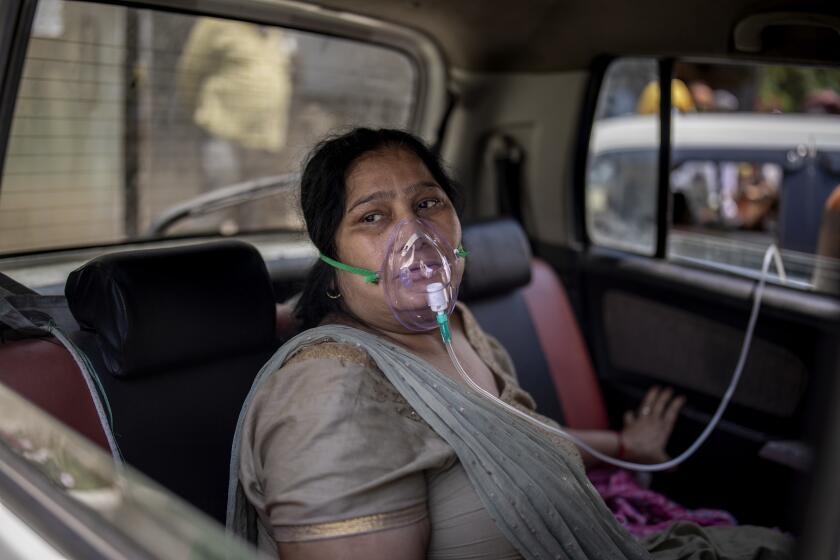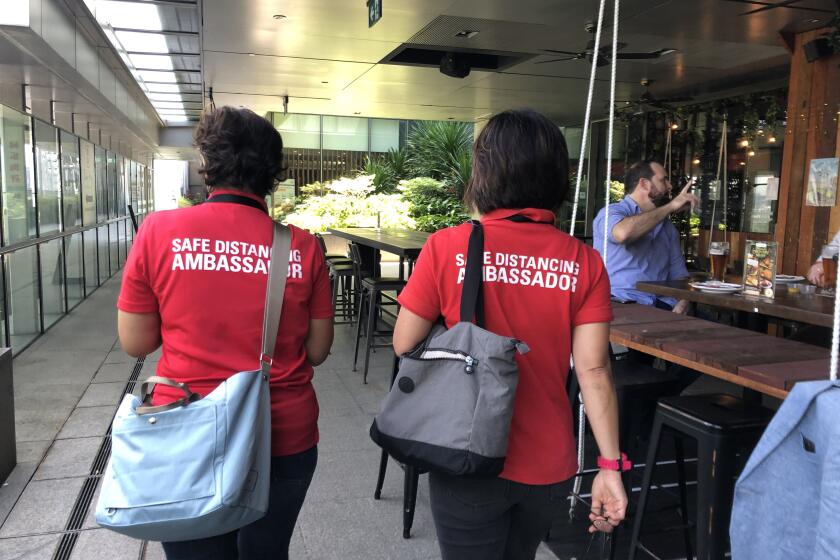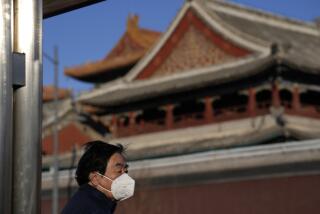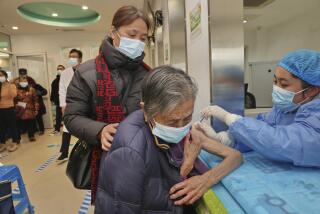These parts of Asia beat coronavirus early. Why they’re suddenly in lockdown
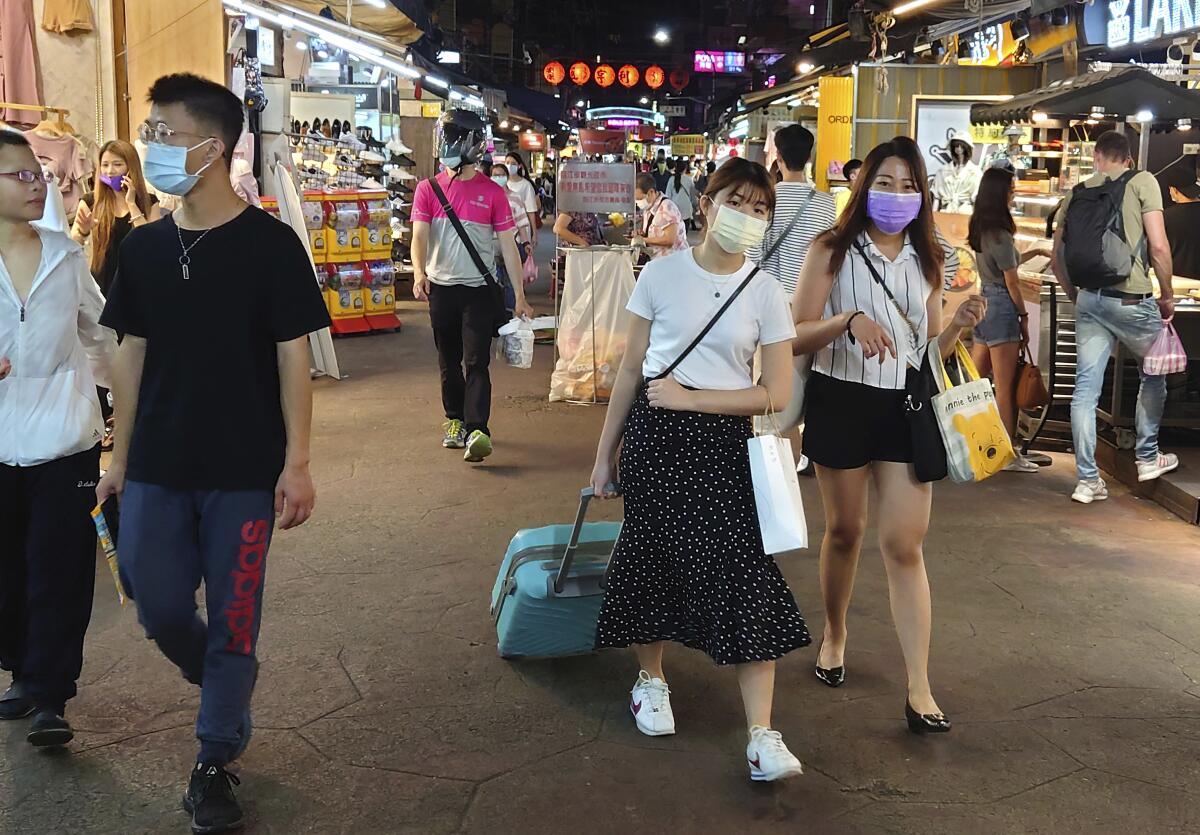
- Share via
TAIPEI, Taiwan — While much of the world is moving beyond the pandemic, Taiwan, which for so long had kept the virus at bay, is unnerved by scenes countries have long forgotten: listless streets, shuttered shops, a run on toilet paper and untold empty seats on subways.
The sudden reversal in Taiwan’s status mirrors setbacks unfolding across Asia. Nations that were lauded and often envied for the way they controlled COVID-19 — keeping death tolls low and allowing millions to work, attend schools and dine out — are now beset by new lockdowns, dwindling hospital beds and growing fatigue as the pandemic wears on.
That feeling of defeat is most profound here. For the first time since COVID-19 emerged, Taiwan has imposed strict lockdown measures to stop a virus that’s killed more than 3.3 million people worldwide. The self-governing island reported several hundred infections in the last week after months without any. All public spaces such as cinemas, libraries and recreation centers were ordered shut, and public schools will remain closed until at least the end of the month.
These actions come as the virus and its variants flare across the region. Cases are soaring in Vietnam, Thailand, Cambodia and Laos for the first time and returning in numbers that haven’t been seen in months in Singapore, Malaysia and Japan, which is under pressure from healthcare workers and business leaders to cancel the Summer Olympics set for July in Tokyo.
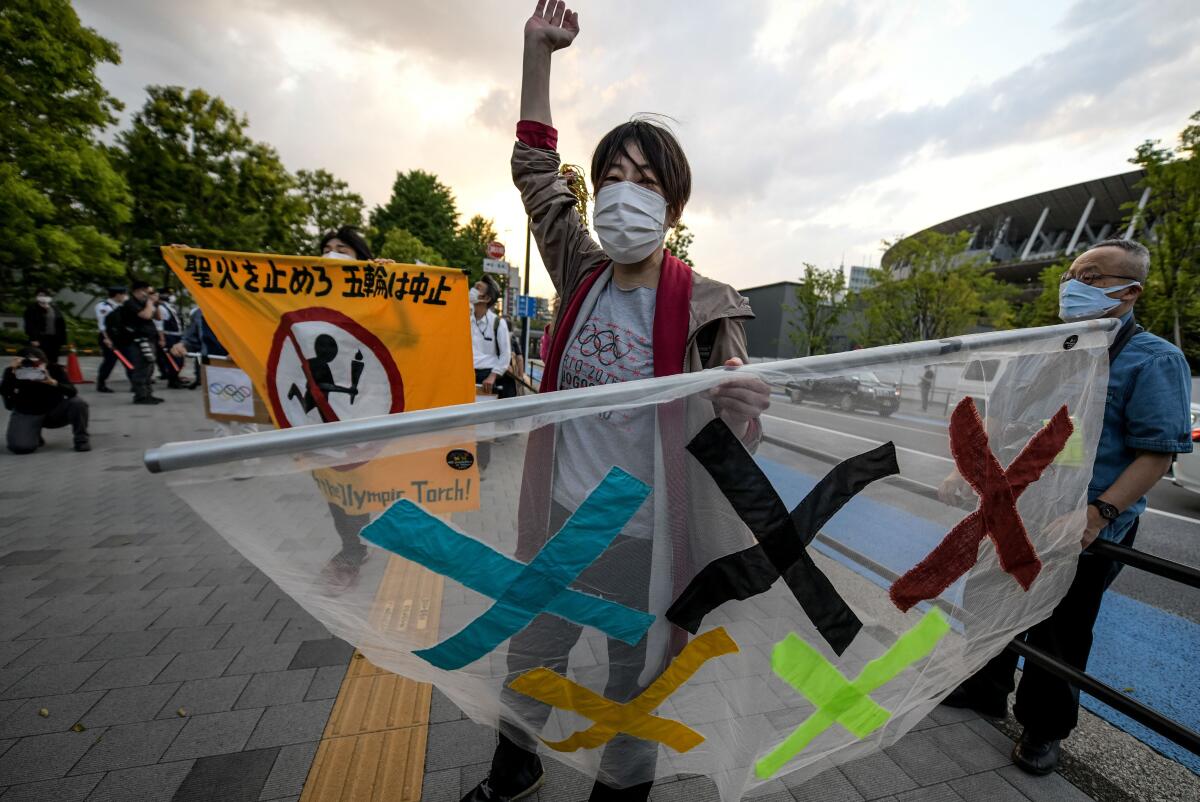
Largely due to skyrocketing cases in India, which has become the epicenter of the latest surge, more than 60% of the 10 million new cases recorded globally the first half of May were in Asia, according to the latest figures from the Our World in Data project at the University of Oxford.
The new outbreaks of COVID-19 underscore the long road ahead for a global recovery, even as countries like the United States begin to reopen. They also point up the limitations of border controls, which have been deployed throughout Asia and relaxed in the U.S. and Europe.
“It’s a pandemic,” said Dale Fisher, an infectious disease expert at the National University of Singapore. “Eventually borders will give way. It’s statistically inevitable.”
Social restrictions and public health measures are being tested, particularly as more infectious variants of the coronavirus emerge from major hotspots such as India. Fisher said the only way to stem the new threats — and reach herd immunity — is vaccinating populations: “The end game requires high levels of vaccination to manage what will be an endemic and possibly seasonal disease.”
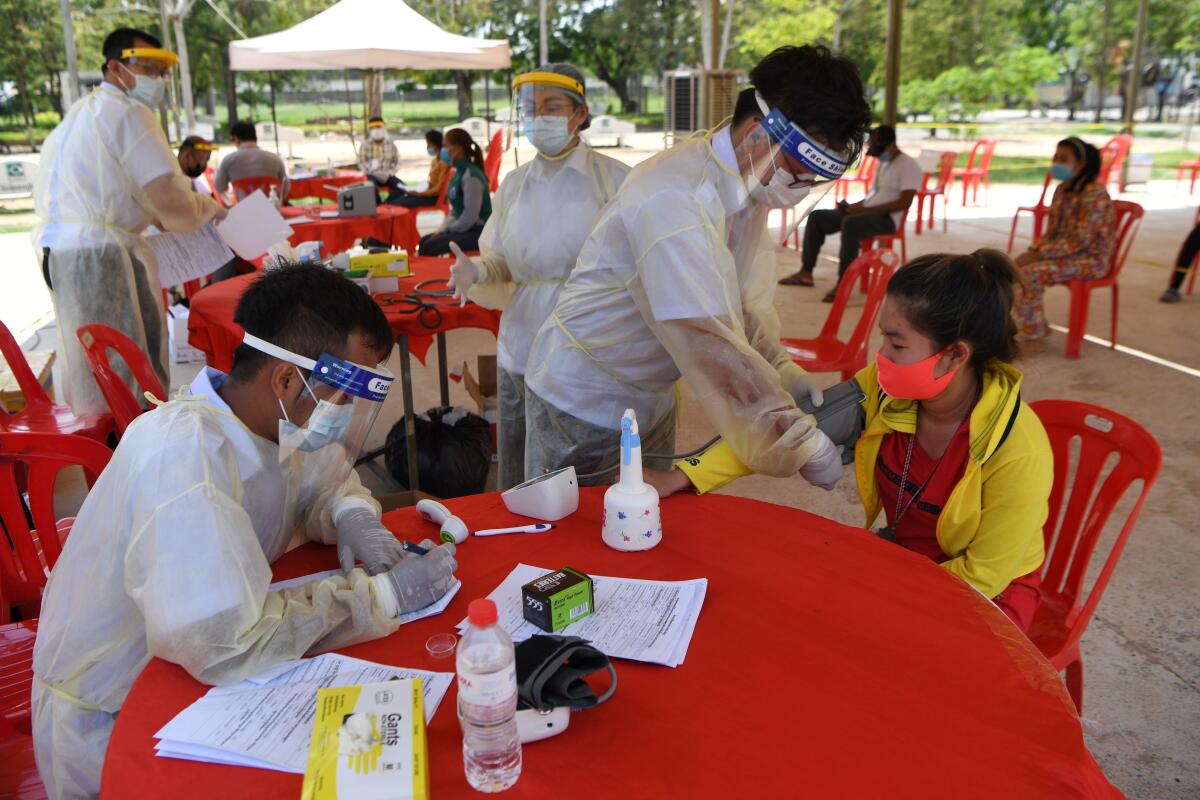
But the vast majority of vaccines have gone to wealthier countries including U.S. and those in Europe. Significantly fewer doses have been delivered to poorer nations such as Vietnam, Laos and the Philippines. Leaving millions unvaccinated in dense urban centers with weak healthcare systems provides ideal conditions for variants to mutate and prolong the pandemic, experts say.
In multiple countries, the COVID-19 pandemic has reached one of its bleakest points yet.
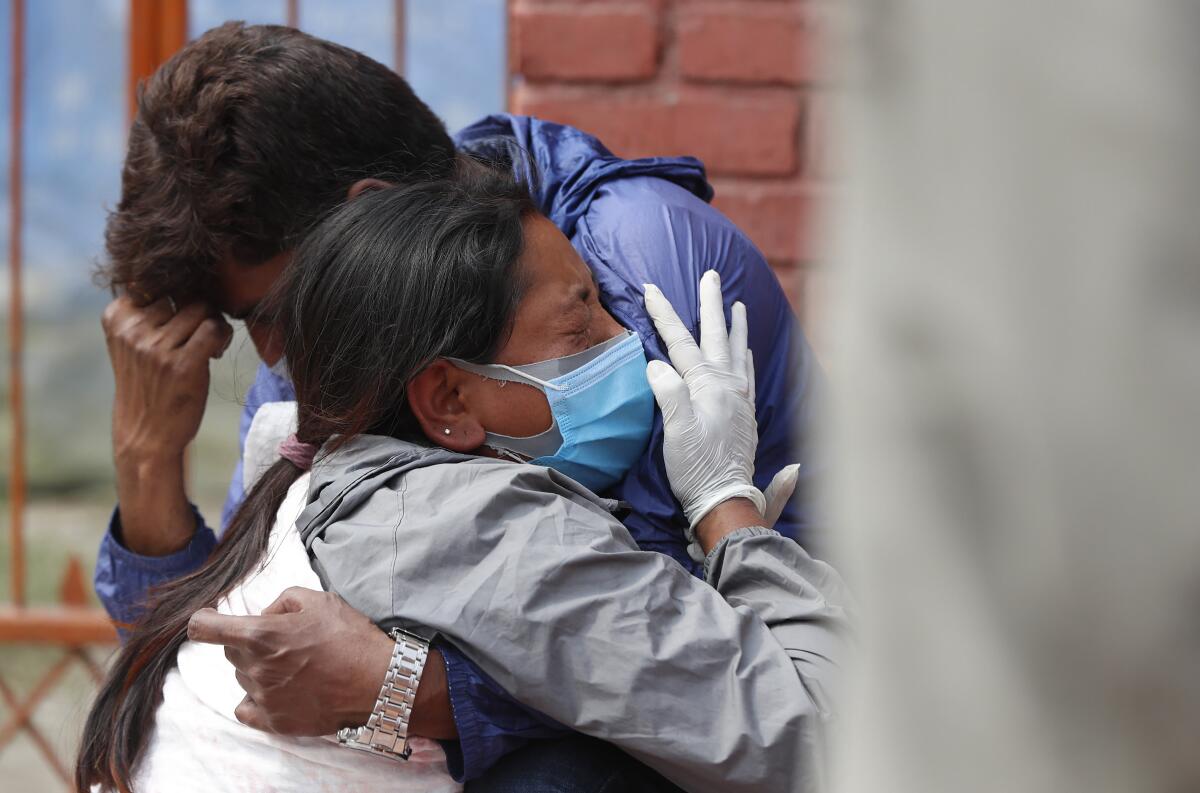
The spike in cases in Southeast and East Asia on the heels of massive outbreaks in India, Nepal, Sri Lanka and the Maldives underscores how quickly new variants are spreading, said Abhishek Rimal, the Asia Pacific emergency health coordinator at the International Federation of Red Cross and Red Crescent Societies.
“The world needs to realize no one is safe until everyone is safe,” Rimal said from Kuala Lumpur, Malaysia’s capital, which entered its third lockdown last month. “At this point the U.S. looks great, but if a variant mutates, it will eventually reach the U.S. This is the cycle in a pandemic. You have to ensure everyone is safe. That’s why we need a fair distribution of vaccines.”
It’s not just poor countries in Asia that are struggling to get doses. Middle-income nations such as Thailand, Malaysia and Indonesia have vaccination rates in the low single digits. Even a rich country like Japan, which is undergoing a fourth wave of infections, has failed to deliver shots at rates anywhere near other nations of similar economic standing.

Less than 3% of Japan’s population of 126 million has been fully vaccinated in a program besieged by accusations of mismanagement, line-jumping and a poorly designed booking system.
Hiroko Fukushima, a 79-year-old who lives on her own in Japan’s Ehime prefecture, was desperate to get a shot so her youngest daughter could visit her safely to observe the seventh anniversary of her husband’s death. Despite calling more than 150 times over five days, Fukushima failed to get a vaccination appointment. Her eldest daughter finally got her one for June.
“None of my neighbors have been vaccinated so far,” Fukushima said. “Lots of them live alone and don’t have children around to help them.”
Prime Minister Yoshihide Suga announced last week that Hokkaido, Okayama and Hiroshima would join six prefectures, including Tokyo and Osaka, already under state of emergency measures until the end of the month. Three other prefectures were listed as being in “quasi-emergency.” Combined, the measures put about 70% of Japan’s population under restrictions.
Hospitals are hard pressed to cope. In Osaka, where the volume of weekly infections is the highest in the country, critical-care beds are nearly full. Between 15,000 and 17,000 patients are reportedly being left without medical care, and the Osaka governor has warned that fatality rates could continue to rise.
Last week, a union of hospital doctors in Japan said the Olympics should be called off as the games would risk the circulation of potentially vaccine-resistant variants. The Games will be closed to foreign spectators.
Safe distancing ambassadors help ensure Singaporeans are observing health guidelines to maintain the country’s success in curbing cases of COVID-19.
Japan’s business leaders have echoed those concerns. The billionaire founder and chief executive of consumer electronics giant Rakuten said holding the games was a “suicide mission.”
While Japan’s outbreak has been gathering momentum for months, Singapore’s has only just begun. Three weeks ago, the wealthy city-state topped Bloomberg’s “Covid Resilience” rankings as the best place to be during the pandemic, not the least because life remained largely undisturbed.
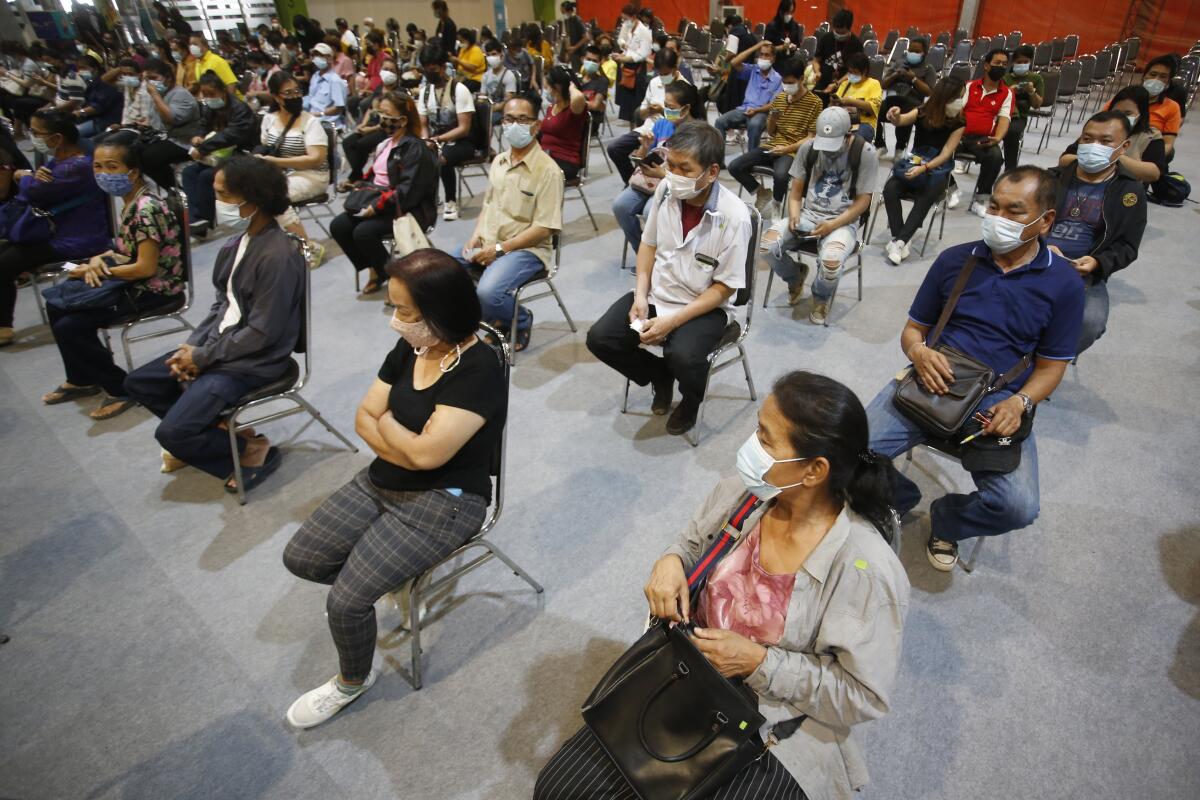
Since then, the Southeast Asian nation of 5.8 million has seen a sharp jump in cases, prompting the government to order lockdown measures on Sunday for the first time in nearly a year. The reversal marks a serious blow for Singapore, which has vaccinated one-fifth of its population and imposed border controls, deploying so-called safe distancing ambassadors and making a contact tracing app mandatory.
Officials say the latest wave was sparked by the arrival of Singaporean citizens and long-term residents from India.
Singapore, a major travel hub, was set to signal it was slowly coming back by hosting the World Economic Forum in August, an annual meeting that usually takes place in Davos, Switzerland. But organizers said Monday that the event would be postponed until next year at an undetermined location because of “an uncertain travel outlook, differing speeds of vaccination rollout and the uncertainty around new variants.”
Global health experts say vaccine hesitancy can be high in places that experience low numbers of cases and deaths. Until last week, that described Taiwan, which captured the world’s attention last year for going more than 200 consecutive days without a local infection.
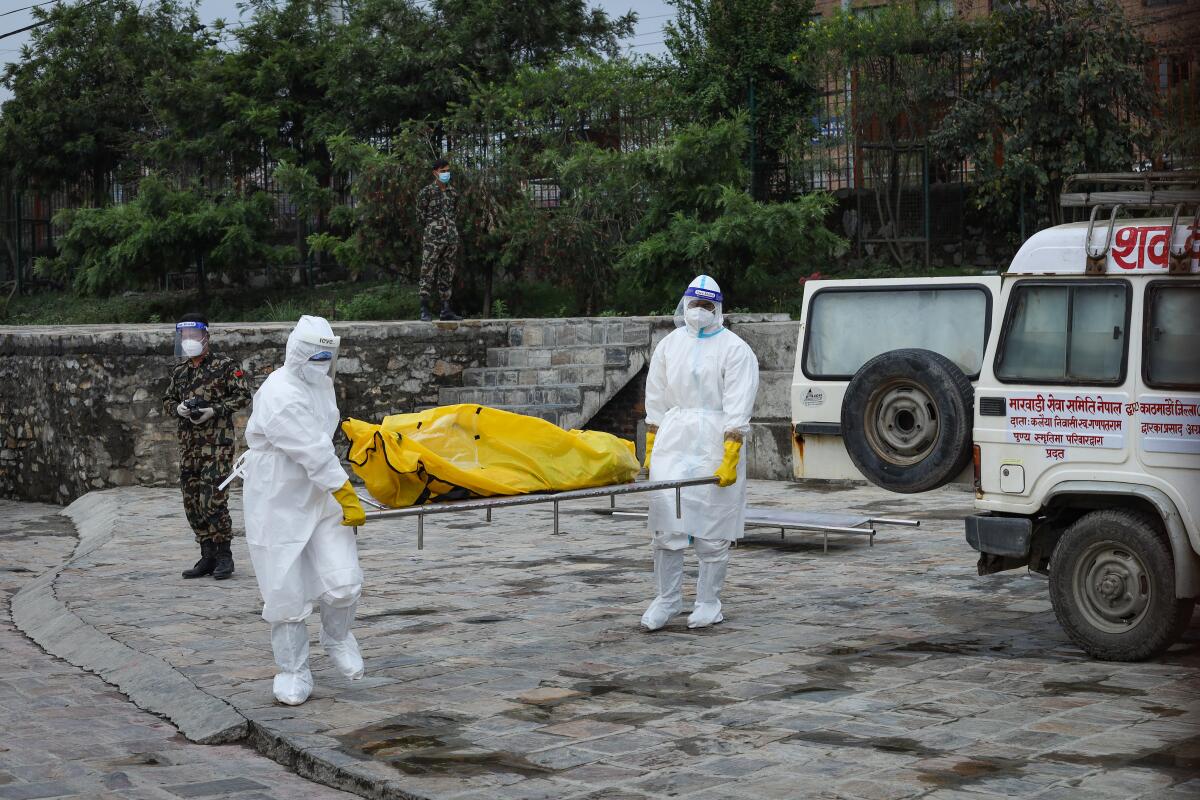
The island had a record high 333 cases Monday after announcing 206 and 180 the previous two days. The government said it would impose tougher measures if daily cases continued to exceed 100. The outbreak is linked to several clusters, including a gambling arcade, an airport hotel and a former Lions Club executive who was accused of flouting mask rules.
News of the lockdown Saturday sparked panic buying in supermarkets. Shelves quickly emptied of toilet paper, masks and disinfectant by Monday morning, even after President Tsai Ing-wen urged people to avoid hoarding.
“I felt panic when I heard the announcement ... and I rushed to the supermarket for supplies,” said Ruby Liu, 31, who works for a magazine publisher in Taipei. “However, I gave up when I saw the long lines.”
Times staff writer Pierson reported from Singapore and special correspondents Jennings from Taipei and Lowry from Tokyo.
More to Read
Sign up for Essential California
The most important California stories and recommendations in your inbox every morning.
You may occasionally receive promotional content from the Los Angeles Times.
